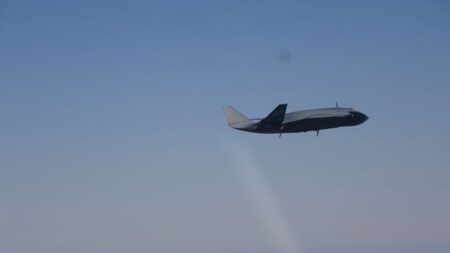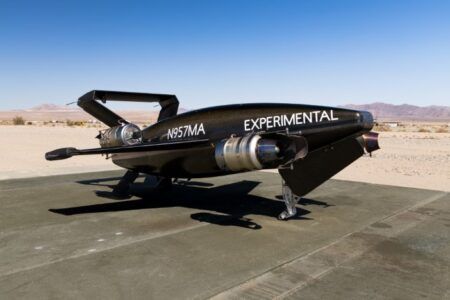BAE Systems and the University of Manchester in the UK have flown a UAV with a control method they say could “change the future of aircraft design” and announced that further tests are underway.
Magma is a small-scale unmanned aerial vehicle (UAV) which uses a blown-air system to manoeuver in a stealthier way.
The concept removes the need for the mechanical moving parts usually used to move flaps to control an aircraft during flight. The method could also give greater control of aircraft as well as reduce weight and maintenance costs, allowing for lighter, stealthier, faster and more efficient military and civil aircraft in the future.
Two technologies are to be trialled first using the jet-powered Magma UAV. Wing circulation control takes air from the aircraft engine and blows it supersonically through the trailing edge of the wing to provide control for the aircraft. Fluidic thrust vectoring uses blown air to deflect the exhaust, allowing for the direction of the aircraft to be changed.
The flight trials are part of a project between BAE Systems and the University of Manchester to develop innovative flight control technology. Further flight trials are planned for the coming months to demonstrate the flight control technologies with the ultimate aim of flying the aircraft without any moving control surfaces or fins.
If successful, the tests will demonstrate the first ever use of such circulation control in flight on a gas turbine aircraft and from a single engine.
Clyde Warsop, an engineering fellow at BAE Systems, said, “The technologies we are developing will make it possible to design cheaper, higher performance, next generation aircraft.
Bill Crowther, a senior academic and leader of the Magma project at the University of Manchester, said, “These trials are an important step forward in our efforts to explore adaptable airframes. What we are seeking to do through this program is truly ground-breaking.”
Additional technologies to improve the performance of the UAV are being explored in collaboration with the University of Arizona in the USA and NATO Science and Technology Organisation.
December 20, 2017




